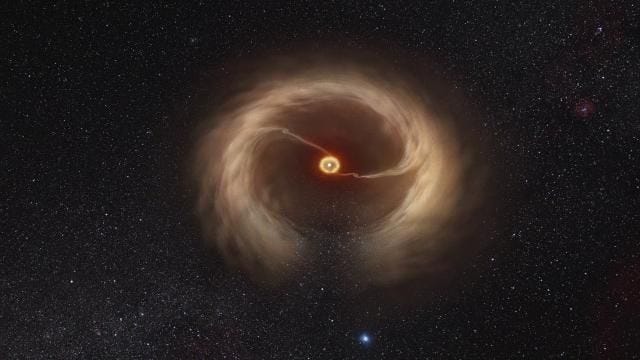It's the story of a manatee which lives at eagle's house. Or rather, a nebula looking like a manatee which is in the constellation of the Eagle, at 18 000 light-years from the Earth.
This discovery has been done a few days ago by Very Large Array Telescope in San Augustin, New Mexico.
This nebula was formed by the remnant of W50-Supernova, which is 20,000 years old and
which is 700 light-years long. In W50, there's a black hole that devours the gas of a nearby star. This process leads to the formation of a gaseous disk, the Manatee nebula, which causes the appearance of extremely powerful magnetic field. This field expels the electrically charged particles present around W50, and so that forms imposing particle jets propelled at nearly the speed of light (about 300,000 km/s).
which is 700 light-years long. In W50, there's a black hole that devours the gas of a nearby star. This process leads to the formation of a gaseous disk, the Manatee nebula, which causes the appearance of extremely powerful magnetic field. This field expels the electrically charged particles present around W50, and so that forms imposing particle jets propelled at nearly the speed of light (about 300,000 km/s).
Info for astronomy fans : the duo formed by a black hole and a star that feeds him is called a microquasar. The microquasar located in W50-Supernova has been called SS433.
...



















